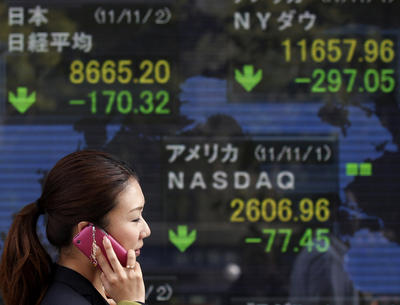benefiting not only from interest rate spreads but also from capital gains in the form of depreciation in the Japanese yen. This is what is referred to as carry trade. In particular, the yen carry trade has become such a globally reputed model of financial transactions in recent years that ‘Mrs Watanabe’, the fabled Japanese housewife investor supposed to aggressively engage in such transactions, has come to be recognised by traders around the world.
Although the yen carry trade may not be as voluminous as it was some time ago, we continue to hear claims that the aggressive monetary easing of the US Federal Reserve is the primary factor behind the downward movement of the yen–dollar exchange rate (or the yen’s appreciation). In this regard, it seems that potential profits from the yen carry trade remain substantially large. But from the viewpoint of financial arbitrage, carry trade must not always be profitable. If it is profitable on average, then arbitrage opportunities will be exhausted and there should be certain risk taken in pursuit of compensation.
One of the most prominent theories used to explain foreign exchange rate fluctuations is that of the uncovered interest rate parity condition, which is based on the simple idea that the expected returns on deposits of any two currencies are equal when measured in the same currency. Specifically, where i is the Japanese interest rate, i* is the Australian interest rate, and S is the Australian dollar’s rate against the Japanese yen, the following equation should hold:
1 + i(t) = (1 + i*)S(t+1)/S(t).
The left side of the equation represents the return on investment in Japan and is equal to the right side, which represents the return in Australia denominated in yen. According to this equation, the expected return on carry trade (denominated in yen) must be zero, calculated as the right side minus the left side.
However, many existing studies have found that actual returns on carry trade, as seen from an ex post facto viewpoint, have been positive. The fact that actual returns have been positive in average terms indicates the presence of some sort of risk in carry trade. In other words, any return on carry trade must be compensation for risk. Then, what sort of risk is it?
When the growth rate of exchange rates between a high-interest rate currency and a low-interest rate currency, such as that between the Australian dollar and the Japanese yen, are plotted on a histogram, they are not distributed symmetrically across the centre position of zero, but skewed to the left, toward the depreciation of the high-interest rate currency. In particular, it is known that high-interest rate currencies, albeit at an extremely low probability, depreciate dramatically in a very short period of time. The risk of such sudden and sharp depreciation, which is referred to as ‘tail risk’ or ‘disaster risk’, has been drawing much attention recently as the cost of positive returns from financial transactions.
Investors may be able, on average, to receive positive returns on carry trade, but they are embracing the risk of a sharp depreciation in the high-interest rate currency at the same time. In other words, carry trade poses the potential risk that investors could face a significant depreciation when they are in need of cash. After all, there is no free lunch in financial transactions.
Ippei Fujiwara is Associate Professor at the Crawford School of Public Policy, the Australian National University.
A version of this article first appeared here on the Research Institute of Economy, Trade and Industry website and here in the APEC Economies Newsletter.

